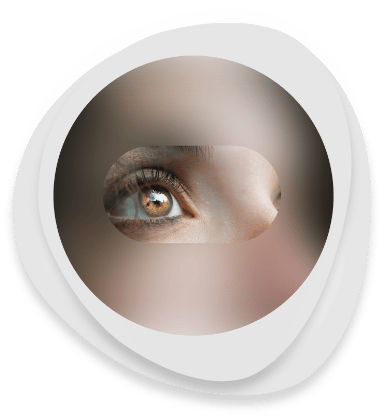June 2024
Congratulations on successfully undergoing cataract surgery!
You’ve taken a significant step towards gaining back a clear vision and being able to see the world in vibrant detail again. Many of our patients here at OVO LASIK + LENS, find that the first 24-48 hours are filled with excitement as they begin to experience initial stages of improvement in their vision. This initial improvement is fantastic, but patience is needed during the healing process as your brain must fully adjust to the influx of new visual information it can now receive. Let’s explore a key recovery process called neuroadaptation, and 3 techniques you can use for training your eyes after cataract surgery to optimize your visual recovery.
What Is Neuroadaptation & Why Does It Matter?
When you live with cataracts and the blurred vision they bring, your brain works extra hard to try and fill in the blanks with what little information it has. When undergoing cataract surgery, the clouded lens is removed, restoring your vision with an IOL implant, and allowing you to see clearly again. But this sudden change in your vision and the influx of visual stimuli is a lot for your brain to process, so it can take some time to adjust to process everything properly. This is where neuroadaptation comes in.
What Is Neuroadaptation?
Neuroadaptation in the context of cataract surgery, refers to the brain’s ability to adjust to changes in visual input after the implantation of artificial lenses. These new lenses alter how your eye focuses light, requiring your brain to adjust how it processes the new visual information. Neuroadaptation allows your brain to rewire and adapt to the new visual input over time, helping you overcome issues like glare, halos, and other visual disturbances post-surgery. This is why you have a period of eye adjustment after cataract surgery, as the brain learns to interpret the altered visual signals effectively, giving you improved visual function and clarity.
Why Does It Matter for both the Brain and the Eye to Adjust After Cataract Surgery?
- Faster Visual Improvements: if you spend time training your eyes after cataract surgery, this can help accelerate your vision improvement beyond the initial clarity you experience, as the brain learns to fine-tune how it processes the sharper signals.
- Enhanced Visual Processing: Neuroadaptation goes beyond just seeing clearly though. As you begin to effectively interpret the new visual information, you’ll notice improvements in depth perception, color recognition, and night vision among others.
By prioritizing neuroadaptation through simple eye exercises, you can actively participate in unlocking the full potential of your new vision. In our next section, we’ll explore some techniques you can use for training your eyes after cataract surgery.
3 Techniques To Use During Eye Adjustment Training After Cataract Surgery
In using the 3 techniques below for training your eyes after cataract surgery, you can stimulate your brain’s visual processing and possibly accelerate neuroadaptation.
1. Active Viewing: This involves consciously using your new vision to observe the world around you.
- Read & Engage: Start by reading for short periods and gradually increase the duration. This actively engages your brain with clear visual information.
- Focus On Details: Practice focusing on near and far away objects, noticing the details you might have missed before.
- Embrace Visual Activities: Engage in hobbies that require visual attention, like painting, photography, puzzle-solving, or detailed crafts.
2. Light & Color Exploration: The clarity and brightness of your vision are going to make colors appear brighter and more vibrant. Spend time to:
- Explore Natural Surroundings: Take walks in nature and appreciate the vibrancy of colors in flowers, trees, or the sky.
- Engage With Artwork: Visit museums or galleries and immerse yourself in the rich details and colors of paintings.
3. Brain Training Exercises: look into exercises like brain teasers, puzzles, or scientific-backed applications that enhance visual acuity. These exercise types can stimulate neural pathways and help your brain adapt to your new vision.
Takeaway: Patience is key here as the time it takes for your brain to adapt to your new vision varies from person to person. Stay positive and keep engaging your vision for optimal long-term results. Remember, we focus light with our eyes but we see with our brains.
Have Questions?
The process of neuroadaptation is a testament to the incredible adaptability of our brains. By actively engaging in training your eyes after cataract surgery, you can help expedite your visual recovery and enjoy the benefits of clearer vision sooner. Remember, our team at OVO LASIK + LENS is here to support you throughout your visual journey. Don’t hesitate to schedule a follow-up appointment with us to discuss your progress and address any concerns you may have.
NEWS + PRESS
Schedule Your Free OVO Lasik
Consultation Today!

We’ll never share your details.






